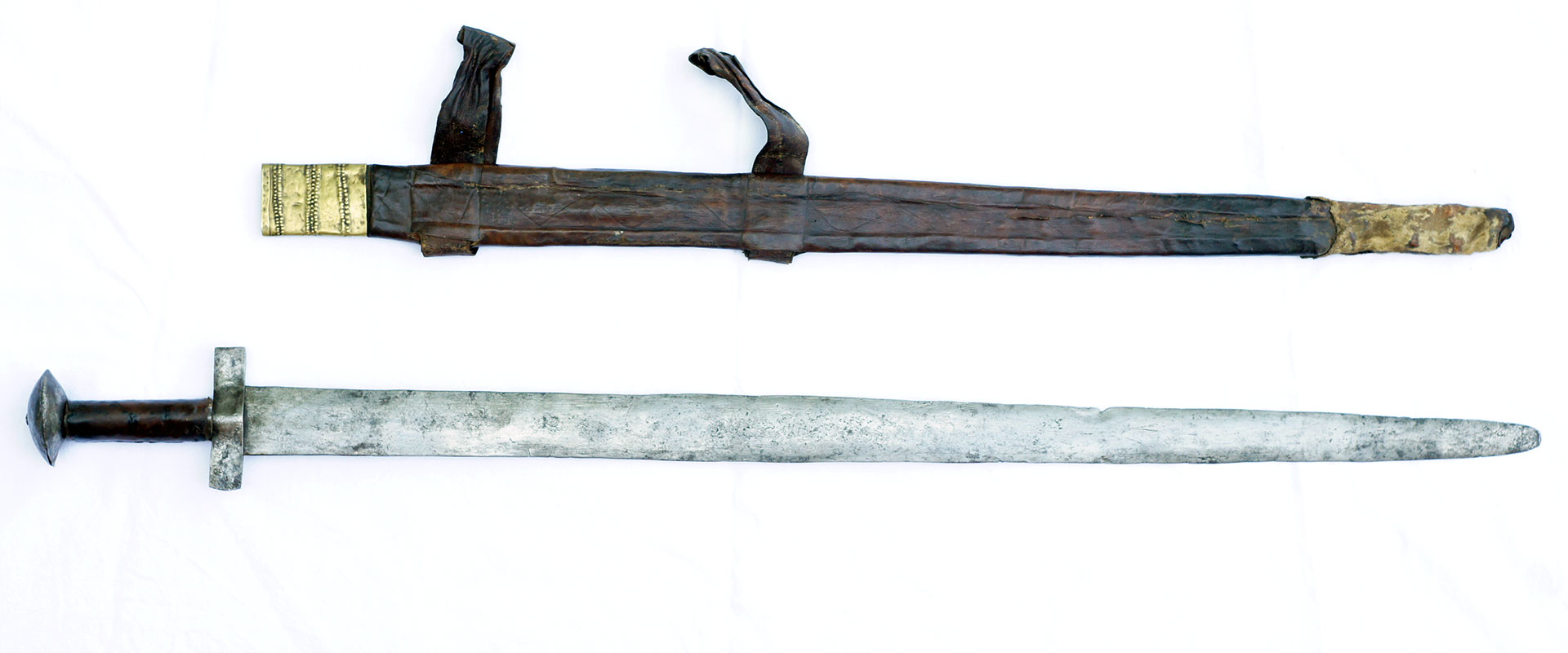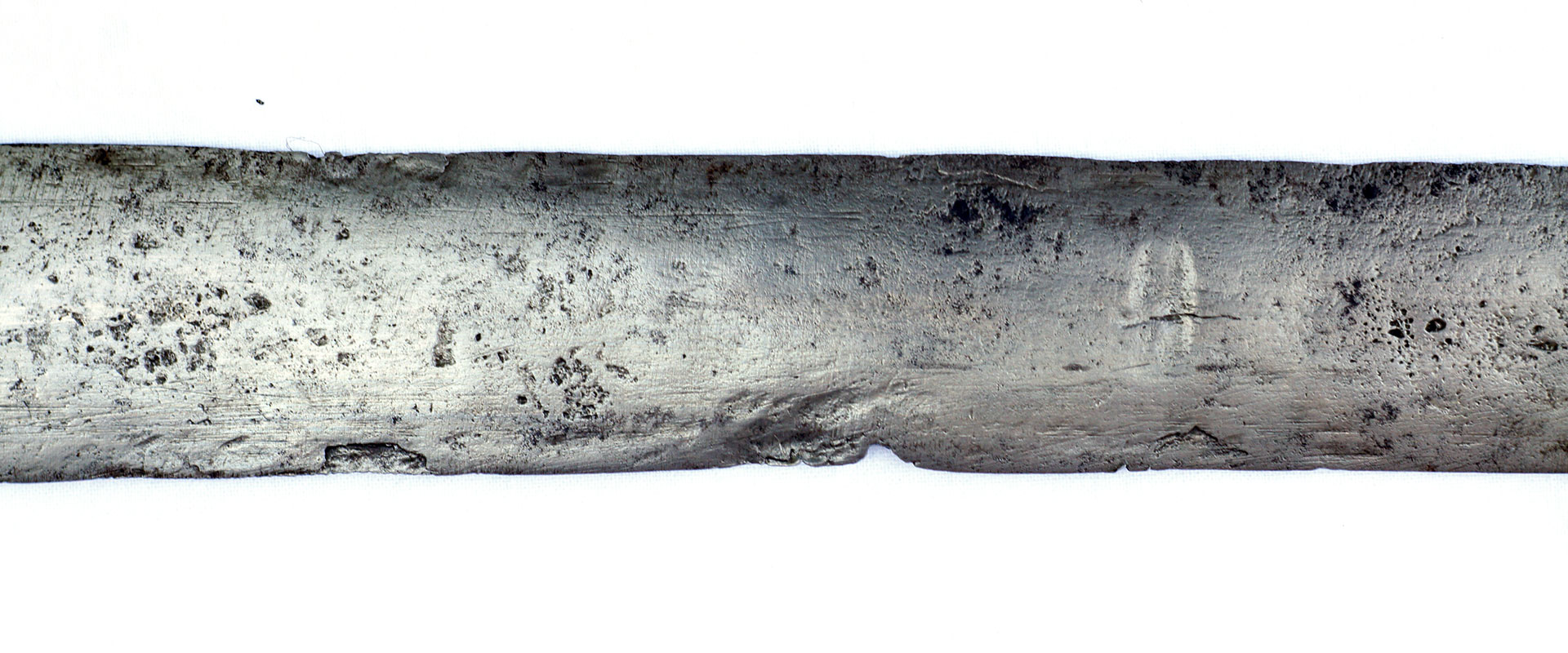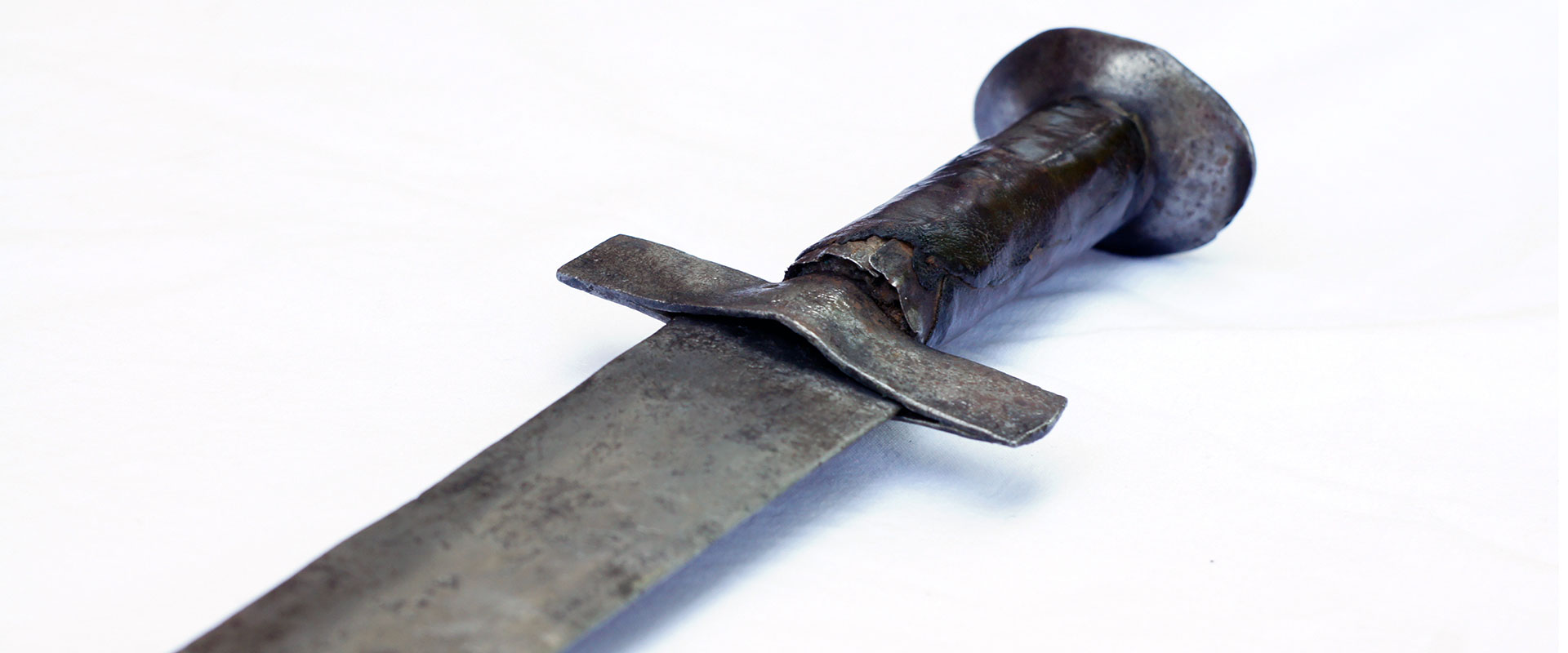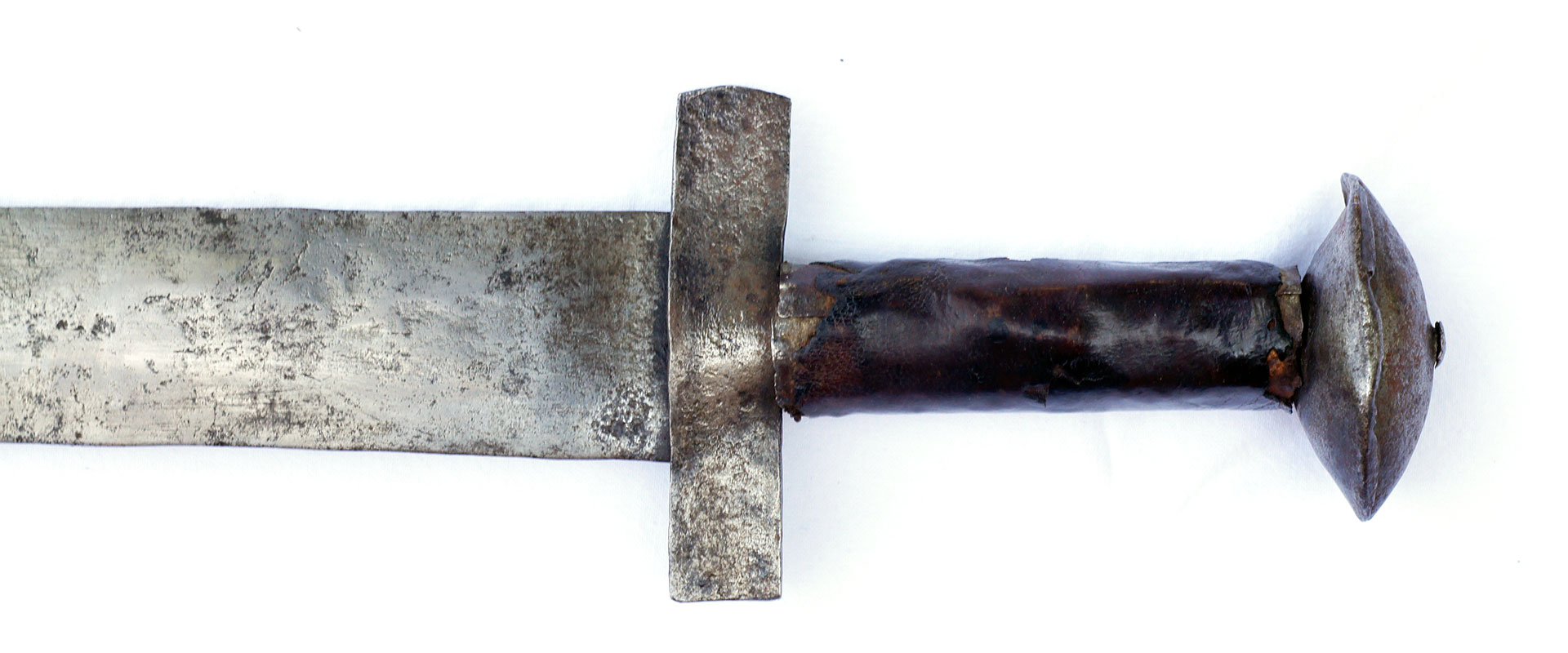
In defence of "poor quality" examples
October 8, 2023 African Arms
Let's start with a very simple statement. This is not a good sword by pretty much any measure you can think of.

This whole ensemble points to a sword made in basic circumstances with available material. Likely a village product from the late 19th century to perhaps the 1930s made by the sort of smith who probably spent is time also making ax heads, hoes and other vital accouterments of an agrarian life style. Based on the little provenance that came with the piece I suspect this particular example is from Niger. Quite possibly Hausa.
You are probably wondering why, as someone who has takouba of much greater age, rarity and quality, I would seek out and purchase a sword like this.
The answer is perhaps best summed up by the next image.

All the elements speak to a rich simplicity, the guard is a forge weld of two pieces of iron.

The pommel, two halves hammered and crimped together.

Simple, workmanlike swords should not be discounted by collectors. The tend to represent a more insightful picture of the culture and people that used and produced them than the fancy examples with little wear often favored by collectors.